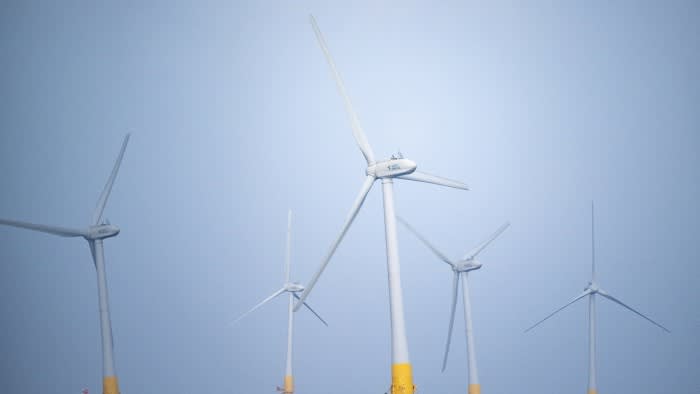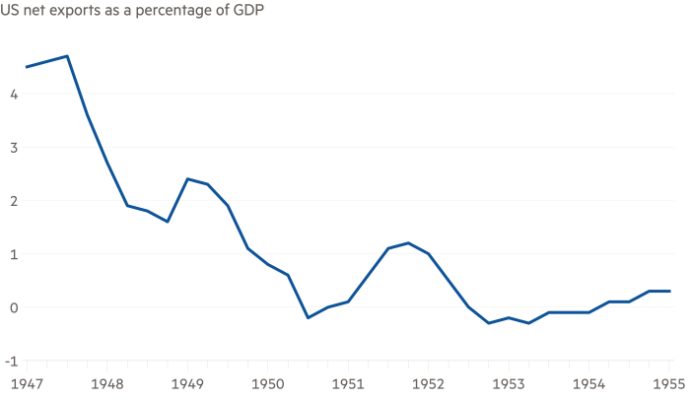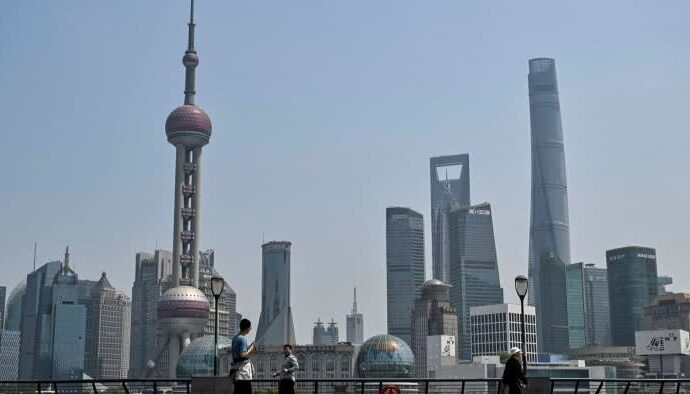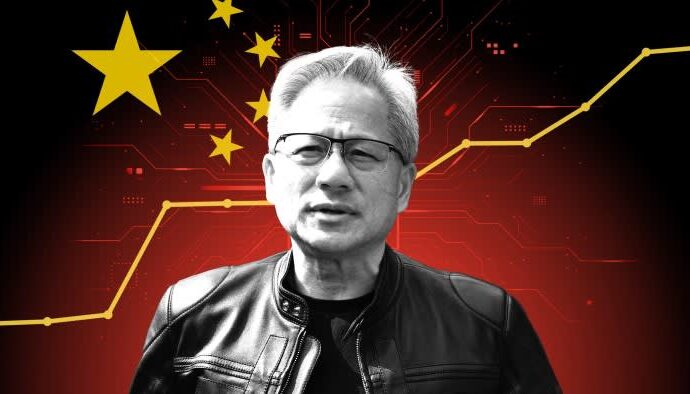
Hello and welcome to Energy Source, coming to you today from Tokyo and New York, where the US government has shut down for the first time in seven years.
Federal agencies are expected to launch sweeping staff furloughs and scale back public services following the failure of Republicans and Democrats to agree a deal to fund the government.
The US Energy Information Administration, a critical data provider for the energy sector, told customers it would be able to continue operating for a period of time during the lapse in appropriations.
Despite the uncertainty in Washington, Wall Street investors continue to buy into the artificial intelligence boom and the energy companies seeking to power data centres.
Fermi America, a start-up co-founded by Rick Perry, a former US energy secretary, raised almost $700mn in an IPO on Wednesday. The company is planning to build the largest energy campus in the world in Amarillo, Texas.
Fermi, which has provisionally named the campus the “President Donald J Trump Advanced Energy and Intelligence Campus”, has not yet named its first customer. Toby Neugebauer, co-founder and chief executive of the company, told Energy Source he had no concerns that forecasts of energy demand might never materialise.
“I think it is delusional to think we’re going to live in a world that doesn’t need dramatically more power,” he said.
In today’s newsletter, our Tokyo correspondent Harry Dempsey reports on a brewing crisis in Japan’s offshore wind industry.
Thanks for reading, Jamie
The FT Energy Transition Summit returns to London on October 29-30, bringing together 350+ energy leaders to debate geopolitics, investment and innovation. Use code EnergySource20 to claim 20% off your in-person pass. Register here.
Can Japan save its offshore wind industry?
Mitsubishi Corporation pulled out of a trio of Japanese offshore wind projects in August, plunging the future of the renewable energy source in the world’s fifth-largest economy into deep uncertainty.
The three projects totalling 1.7 gigawatts of capacity were tendered as part of Japan’s first round of state-run auctions for offshore wind in 2021 but ended in spectacular failure as four years went by with no wind farms being built.
Dramatic cost escalation following the coronavirus pandemic and the Russia-Ukraine conflict were cited as the primary reasons behind the Mitsubishi-led consortium’s exit. The trading house’s president Katsuya Nakanishi said “costs more than doubled”.
Japan now faces the thorny question of whether the projects tendered in the second and third rounds will also fall through or if Japanese policymakers can move nimbly enough — and have enough cards to play — for its offshore wind industry to take off.
Japan’s dilemma not only echoes the challenges apparent elsewhere, as the US, UK and Europe’s wind sectors are battered by high interest rates, but is even more acute because of the Asian nation’s attempts to kick-start an industry from almost scratch, pushing up the costs.
For Japan, a resource-poor nation heavily dependent on fossil fuel imports, offshore wind is vital to improving energy security and decarbonisation. The hope as an island nation has been to emulate the UK’s success in fostering huge wind farms off its coasts and tapping into this resource.
Analysts said Japan had squandered a long period of deflation and low interest rates, as well as the ability to capitalise on the crisis of the Fukushima nuclear power disaster, when European nations powered ahead in creating a wind industry and drove down supply chain costs in the 2010s.
The offshore wind projects handed to Mitsubishi during the first-round auction were to operate under a feed-in-tariff (FIT) scheme, under which the government guarantees that utilities will buy power at a certain price. But surging project costs can soon surpass the fixed rate in an inflationary environment. In an attempt to prevent Mitsubishi’s withdrawal, the government offered the trading house to switch to the feed-in-premium (FIP) system, where a certain premium is added to the market price.
Critics of Mitsubishi said its offer, which ranged from ¥12 to ¥16.5 (8-11 cents) per kWh, amounted to underbidding and profitability could never realistically be achieved.
But Mitsubishi’s Nakanishi said the economics would still not had made sense at far higher prices. “Even if the FIT price was more than doubled and we assumed the FIP scheme, our modelling indicated that continuing would have been difficult.”
Rounds two and three for offshore wind in Japan were awarded under the FIP scheme at the end of 2023 and 2024, respectively, but tough competition meant several of the winners did not secure the premium on top of market prices. The consortiums that won included energy giants such as Jera, RWE, BP and Iberdrola.
The Renewable Energy Institute, a Tokyo-based non-profit research group, wrote that these projects “face even harsher conditions than Mitsubishi” because of the zero-premium bids.
“Unless corrective measures are introduced, there is a real risk that similar turmoil will unfold in succession,” it said.
European governments have responded relatively swiftly to setbacks to their offshore wind sectors. After receiving zero bids in a 2023 auction, the UK government raised the price ceiling by 66 per cent in the next round. Denmark has signalled its intention to revise its auction framework after also experiencing no bids.
Yasushi Ninomiya, executive researcher of the clean energy unit at the Institute of Energy Economics, Japan, said the government could not retroactively change the premium but was locked in negotiations with project developers to create more favourable terms.
“The government is very much afraid withdrawal is coming,” he said. “The difficulty is the auction is done, so there’s not much room to do anything, as the concern is fairness.”
Among the government’s options are extending project lifetimes from 30 to 40 years, allowing participation in the capacity market and supporting utilities with additional costs associated with buying offshore wind power generation. With solar in Japan as cheap as ¥10 per kWh and offshore wind more than three times that, the government’s choice looks increasingly political.
“There are two choices: give up the offshore wind industry now or support the industry with a burden on the taxpayer and create the supply chain in Japan,” Ninomiya said, cautioning that the first option would entail giving up the country’s goal for carbon neutrality by 2050.
The damage to Japan’s 2030 target for 5.7GW of offshore wind is already severe, according to Westwood Global Energy Group, an energy market research business, which predicts a 2.2GW shortfall.
“Japan’s 2030 targets are likely to be missed,” said Hui Min Foong, senior analyst at Westwood. But she added that “it presents an opportunity for the government to use Round 1 as a learning experience, reassess its approach and refocus efforts on supporting future auctions, including Rounds 2 and 3”.
Japanese ministers have vowed to do everything they can to support the offshore wind industry taking off. That will be needed to make good on the strategic energy plan released in February that aims for wind power to generate 4-8 per cent of Japan’s electricity, up from 1.1 per cent in 2023.
But the severity of the crisis means that there is chatter in the industry about a fallback plan if dominoes do topple: abandon offshore wind and go all out on natural gas, hydrogen and carbon capture. (Harry Dempsey)
Power Points
BlackRock’s GIP is nearing a $38bn takeover of utility AES, which supplies power to data centres.
BP’s new chair has signalled more asset sales, as he told staff the troubled oil major was “overly complex”.
Exxon’s CEO sought security assurance from Mozambique’s president last week for a proposed $30bn gas terminal in the African nation amid a jihadist insurgency.
Energy Source is written and edited by Jamie Smyth, Martha Muir, Alexandra White, Kristina Shevory, Tom Wilson, Rachel Millard and Malcolm Moore, with support from the FT’s global team of reporters. Reach us at energy.source@ft.com and follow us on X at @FTEnergy. Catch up on past editions of the newsletter here.
Recommended newsletters for you
Moral Money — Our unmissable newsletter on socially responsible business, sustainable finance and more. Sign up here
The Climate Graphic: Explained — Understanding the most important climate data of the week. Sign up here


